In heavenly repetition, sunshine flooded our breezy bedroom, and we awoke feeling fully recharged. Compared to New York, it seemed miraculous to wake up on an August morning and not rely on air-conditioning. In fact, the breeze had enough coolness to make us snuggle under our blanket. You rarely do that during a NYC summer because air-conditioners can't combat redbrick buildings that are hotter than ovens due to outdated insulation (and weak electricity capacity) by cheap landlords. For Lewis and I, such simple pleasures were cherished.
It was also charming to see that some businesses still get daily deliveries of milk from local dairy farms and creameries. We like places that maintain such wholesome practices.
After showering in our sleek bathroom, we took a gentle-paced stroll to the royal park and ordered breakfast at the Italian Cafe. After several mornings of seeing us, the barista recognized us. Warmed in the oven by the Italian cook, we savored another piadina filled with sautéed garlic, mushrooms, and chicken.
We thrilled ourselves with the ability to sit in sunlight without "baking" in sweltering heat.
*Meanwhile, back at home, gunmen on motorbikes robbed a sidewalk cafe. For an entire year, citizens reported increased motorbike lawlessness to the police. Uncaringly, nothing was done: no additional patrols or increased "police presence".
After its rowdy Caribbean Carnival, we didn't see any news reports of violent crimes in London. Yet, American newscasters reported 44 shootings in NYC during a regular weekend! Watch this brief video (the NYC news anchor is unready for her job)...
Our hotel's prime location made it easy to get to the Victoria & Albert Museum. The route is stroll-worthy, so we walked through Kensington Gardens. It inadvertently blessed us with another Nature Hike. We saw different species of geese and ducks, chuckled at the antics of well-groomed terriers, and sighed with satisfaction at the sight of local equestrians using their bridle paths.
As a truly “green city”, London gives life to 8.4 million trees. With a population of 8.98, that is nearly one tree per Londoner! With 8.38 million residents, NYC only has 5.2 million trees… and much more exhaust and urban pollution. New Yorkers pay more for their situation. Meanwhile, London became the world’s first “Natural Park City”, due to its generous acreage of parkland.
Emerging from a grove of shady trees, we were stunned to encounter the towering Albert Memorial. Enjoy my video of our perspective...
With a height of 176 feet, it was commissioned by Queen Victoria for her loving husband. Requiring 10 years to complete, construction began in 1862, one year after the prince-consort's death. Its grandiosity reminded us of the huge wing that Victoria added to the chapel at Windsor Castle—purely for Albert.

Due to his successes and popularity, many memorials were dedicated to him. Eight of the UK's best sculptors added allegorical scenes: human industries and four continents. I photographed the iconography of Africa...
Many couples posed for photos by the memorial because it is a "symbol of undying love". Lewis and I crossed a thoroughfare named Kensington Road and proceeded south on Kensington Gore, which wraps around Royal Albert Hall.
The mammoth concert hall is famous for is circular splendor: a testament of Victorian architecture. It was designed by Albert's genius, and he charted an entire educational/artistic community there. Only a few of the buildings were finished before he died. The complex is within the Royal Borough of Kensington & Chelsea.
Enjoy by short video of the handsome scene...
It's utterly charming.
*To see my amazing university experiences, please use this link:
https://halfwindsorfullthrottle.blogspot.com/2013/05/college-memories.html
Walking across a tree-lined plaza, we faced the Royal College of Music—an imposing structure of decorative beauty.
We heard piano music flowing from an open window, and those rehearsals serenaded us as we walked along Prince Consort Road. We turned right onto Exhibition Road to the museum. It's named for the 1851 Great Exhibition that Prince Albert popularized—against ignorant opposition—to make Britain stronger by showcasing its abilities and increasing its mercantile trade. When stodgy authorities balked at how to afford the event venue, Albert ingeniously thought of building a glass exhibition hall. It was named the Crystal Palace: affordable, sturdy, and quick to build.
The global event was a huge success, and it spurred annual World Fairs thereafter. All of it was due to Albert.
Exhibition Road is a pretty street, paved with flat stones.
Electric buses and cabs quietly whooshed by us, and it was refreshing to be near traffic yet barely hear their efficient engines. Please turn the sound on for this brief video...
A lack of noise pollution is always nice.
In the vicinity, a reputable builder named Sir Charles Freake erected sizable homes during the 1850s. JP Morgan's father bought one in 1858, but he "accidentally died", and JP infiltrated America's finance and governance thereafter.
Two world-class museums loomed ahead of us. On the right was the gargantuan Natural History Museum, adorned with gargoyles, statues of various animals, stripes of blue bricks, and Romanesque arches.
On the left, our destination was the immense Victoria & Albert Museum!
As you guessed, it is named for Queen Victoria and Prince Albert.
We entered its west side, through a sleek courtyard. Moments before our arrival, security guards unlocked the gates and swiveled them open. That was perfect timing. Like most of London's grandest museums, the V&A is free. A nominal fee is charged for admittance to special exhibits. We were grateful for a nation that nurtures its revenue and can afford to make art accessible to its society.
Encompassing global Arts & Design, the museum has been a pinnacle of culture since 1852. Centrally located, the spiffy gift shop was chock-full of novelties. An ornate cafe filled the spacious inner-courtyard with aromas of coffee, pastries, warm sandwiches, and oven-fresh cookies. A wading pool allowed children to cool off and splash water.
An abundance of tables and chairs let customers eat while admiring the parklike lawn and sculpted facade of the museum. No museum in all of Manhattan has facilities like that: it makes NYC's MoMA and Metropolitan Museum—which are costly and wealthy—look feebly pale.
Uniquely, its indoor Refreshment Room was the world's first museum cafe! Its decor is astounding!
We were impressed while using the sleekly-modern public lavatories. Rarely seen in New York, it was smartly designed so people don't need to touch a door-handle (for sanitary purposes). Motion-sensors activate the urinals, toilets, sink faucets, soap dispensers, and hand dryers—which are smartly positioned over the sinks, so water isn't blown onto the floor (or your shoes). Seen below, illuminated signs indicate where the soap and dryer are. Few places are created with such sensible cleverness. Hooray for them.
Four levels of 145 galleries display human craftsmanship spanning 5,000 years. Ancient artifacts, masterpieces, and iconic designs from around the world are amassed in stately arrangements throughout 12.5 acres. The free museum's collections include 1.25 million items! Enjoy Lewis's amusing video at one of the entrances: it was a motion-activated animation that interacted with us. Turn the sound on...
Exhibits feature a wide breadth: baroque, post-war design, Art Nouveau, Renaissance, surrealism, Chinoiserie, fashion, furniture, textiles, tapestries, plaster casts, stained glass, jewelry, photography, embroidery, and sculpture.
One gallery was dedicated to plaster casts.
Another gallery had replicas of Italian Renaissance masterpieces. It reminded us of our trip to Florence, earlier this year. Fond memories!
Similar to the artifacts that we ogled in Rome and Florence, the V&A has a plethora of items that are suggestively erotic.
Art is a pleasure.
We were keen to wander through spaces dedicated to Japan, China, Korea, South Asia, Europe of the 1600s, Buddhism, and the Islamic Middle East.
We liked the assortment of Japanese inro: small containers that were tied to the insides of mens' robes. Begun in the 1500s, they were the precursors of pocketbooks and purses. They held medicines, ink, or "family seals" (used to notarize documents).
The ones covered in lacquer were amazing. Lacquer is made from the sap of East Asian trees. After being refined, the expensive liquid is applied in many thin layers. The application process is complex and time-consuming. Usually red, the lacquer can be tinted gold and inlaid with precious stones or seashells.
It reminded us of the Purse & Handbag Museum that we visited in Amsterdam. Please use this link to see that...
https://halfwindsorfullthrottle.blogspot.com/2019/08/our-trip-to-netherlands-part-5-of.html
I was wowed by a fierce-looking suit of armor that was made in a Haramaki style. The style originated during Japan's feudal times of the 10th-century, and it was worn by samurai. It consists of six parts: helmet, mask (for intimidation), cuirass, sleeves, waist guards, and shoulder shields. The color of the lacing identified the warrior's clan. Regional symbolism was emblazoned on the armor. The design of the of the lacing proved a warrior's rank. Creatively, the armor was ventilated and designed to be easily cleaned. (That is classically Japanese).
Woven in 1870, several kimonos were elaborately patterned. Gorgeous!
In fact, the V&A started amassing Japanese creations when it opened in 1852. Now, it boasts one of the world's most comprehensive collections of lacquerware, armor, ceramics, fashion, and contemporary studio crafts outside of Japan.
The V&A also proudly displays one of the most important collections of Chinese art found beyond Eastern Asia: 18,000 manmade creations, dating from 3000 BC to modern times. It was astounding to see jade, manuscripts, illustrated scrolls, porcelain, metalwork, furnishings, ivory sculptures, interwoven bamboo, paintings, and clothing.
Seen above, I positioned my photograph to seem like the statue is holding the man's head. Ha ha!
Impressively carved in the 1780s, a red-lacquered throne was commissioned for the Tuanhe (Traveling Palace) in China. It's decorated with imperial imagery—especially five-clawed dragons. During the phony Boxer Rebellion (instigated by European powers that wanted an excuse to invade and loot China in 1900), Russian troops stole it. During Russia's Bolshevik/Soviet Revolution of 1917, the throne was evacuated to Britain.

Colored with the imperial hue of yellow, a robe hung beside the throne. A placard described it as a "summer robe". We presume that it was worn when the emperor went to his palaces, south of Beijing... taking his portable throne with his entourage.
In another section, I saw scantily-clad females illustrated on advertisement posters from 1920. Compared to the Qing Dynasty's stringency for women, those progressive-era posters prove that Western culture liberated ladies in Shanghai and Hong Kong, where European/American influence existed. Even by British Edwardian standards, it was risqué: short hair, sleeveless swimsuit, exposed legs, and visible cleavage. Of course, western nations wanted to generate purchases and turn the Chinese citizens into consumers, so it was a self-serving strategy.
A two-level area was dedicated to exquisite jewelry. Having studied jewelry design at NYC's prestigious Fashion Institute of Technology (FIT), Lewis was enraptured with the creations.

An assortment of crowns and tiaras filled another section. Girls see imitation-tiaras during their high school proms, and gay men wear them for Tiara & Titan parties...
Going up the illuminated see-through stairs, we ogled at jeweled swords and miniatures.
Afterwards, Lewis posed beside replicas of the silver lions that are located in the throne room of Rosenborg Castle, in Copenhagen. It evoked memories of our time in that capital.
At the gift shop, Lewis preened through many earrings to buy the best ones for his mother. (When we returned home, she wore them immediately, as we described our adventures). Inspired by the woodblock print, "Great Wave", by Katsushika Hokusai in 1831, I bought a cap with the wave cresting in a teacup. Its a memento of two things from this trip!
It was a walkable distance to the National Gallery, so we took advantage of the sunny afternoon and London's sightseeing. Incidentally, if you need advise or directions as a tourist, London helpfully has Information Guides.
Throughout London, we observed a proliferation of attractive "food stalls". They add panache to the streets, instead of detracting from the landscape.
We marveled at them because Manhattan is defaced by its greedy allowance of slovenly food carts that excrete smoke and stench in every district—rich and poor alike. Paying extra for upscale areas does not let you escape them. They are unsanitary, but the overpaid authorities ignore that.
That's how NYC was in its slovenly past, since 1870... and it hasn't matured yet.
It's like a third-word country.
It made us grateful to be savoring a first-world one.
Lewis noticed a bus at its bus stop, and he was eager to ride upstairs again. We did. Moving along smoothly, the bus soon arrived at our destination: Trafalgar Square.
Here is my panoramic video of its pretty scenery...
Before he became a Founding Father of the USA, Franklin was an Anglophile. He loved living in London and being a Londoner. Bravely making a transatlantic voyage from America in 1745, he first visited the capital as a teenager. He stayed for a year. As an adult, the Province of Pennsylvania used him as a lobbyist in England to make itself a Crown Colony for the king. Whilst living in London for 18 years, he became a Fellow of the Royal Society. His electrical experiments provided international fame, and his intellect and political talents won him friendships with Secretaries of State. He knew the Prime Minister, who liked his plans to bring the colonies together… but the colonies’ disunited friction prevented it. From 1757 to 1775, his home was at 36 Craven Street: a new townhouse near Trafalgar Square, Parliament, and the River Thames. He performed notable deeds: installing lightning rods on St. Paul’s Cathedral and devising a hot-water plumbing system for the British Parliament at the Palace of Westminster. On behalf of the Empire, he charted the first rendering of the Gulf Stream in the Atlantic Ocean; it was used to accelerate ships.
Exasperated by the self-serving factions and uneducated mindsets of Americans, he relished London’s cosmopolitan array of intelligence, culture, arts, and acceptance. (Outsiders who viewed Londoners as snooty would be shocked by the Puritan-rooted hypocrisy and snootiness of people dwelling in America). At age 56, Benjamin Franklin remained enthralled with London and adored Britain. He wrote, “This island, which compared to America is like a stepping stone in a brook, enjoys—in almost every neighborhood—more sensible, virtuous and elegant minds than we can collect in 100-leagues of our vast land (America).” Rising in prominence, he and his son attended the coronation of King George III. He groomed his son, William, to become well-connected in England’s high society and influentially powerful in its government. William married a sugar-heiress and became the Crown-appointed Royal Governor of New Jersey: a privileged position. William made civic improvements, lessened prison for debtors, and resolved many issues. Following his father’s example, he remained devoted to his duty, upheld his values, and was unwavering in his loyalty. Alas, when the American Revolution erupted, he retained the virtues that his father instilled—even when his father demanded him to abandon England.
Benjamin Franklin’s 180-degree turnaround might be blamed on his ego. Earlier, the King appointed him as Deputy Postmaster of His Majesty’s Colonies in North America, and he initiated America’s first postal network. As tensions brewed between the continents, Ben used a poorly-calculated tactic to divert a report from the colonial government to the King and divulge it to the colonists. He assumed that it would show that the tensions were the fault of one man in the colonial government, and colonists would stop blaming Parliament. Instead, those “leaked documents” backfired with a wave of angst on both sides. England’s Privy Council berated him (you cannot have a king-appointed postmaster publicly tampering with the mail)! Oddly, Franklin—who always had something to say or publish—did not respond to their inquiry. He remained stoic and silent. When the council asked him if he would permit questions, he refused. Without offering explanation or answers, he left their chamber. Consequently, he was dismissed from his job… and newspapers branded him as a troublemaker. Perhaps his ego was unaccustomed to reprimands… so he sulkily abandoned his patriotism for England and converted to an American patriot.
His unapologetic turnaround fueled critics in America and Britain who doubted what he preached via decades of his almanacs. His son advised him to accept his punishment and mend relationships. Retaliating, Ben “cut off” his son from his life; he never permitted a reconciliation. Instead, he lavished fondness and energy on his son’s son… who was a perpetual failure with an erratic temperament and questionable abilities. That caused more reproach from his critics. During the first two years of the Revolutionary War, Ben's job for America was ambassador to the Kingdom of France, where he saturated himself in its courtly extravagance... and was criticized by American diplomats for shirking his own previous values. Nonetheless, his inventions remain helpful in the modern world.
During the Napoleonic War of 1805, the one-eyed, one-armed Admiral Horatio Nelson used unconventional tactics to make Britain dominant in the oceans against French and Spanish fleets.
The square is owned by the monarch via "Right of Crown", and it is maintained by the Greater London Authority, yet the City of Westminster owns the roads around it.
Once again, the massive museum gave free admission. That's a tremendous social value for its 2,300 paintings and portraits ranging from the 1350s to 1900!
You can thank the British government for those free treasure-troves.
We perused the gift shop and bought refreshments at the attractive cafe.
Lewis was also curious for us to explore the Royal Academy of Arts, which was founded in 1768. It is east of the National Gallery on the same road: Piccadilly. For its entire existence, it remains independent and privately funded by artists and architects. From June until the end of August, it hosts an annual Summer Exhibition that is open to the public. It is housed in a castle-like mansion named Burlington House that was begun in 1664 for the 1st Earl of Burlington (he was Irish and became the Lord High Treasurer of Ireland). It passed to the Dukes of Devonshire, and it was sold to the government in 1854, and the Royal Society moved into it in 1857, got a 999-year lease, and their craftsmen added the third level.
We returned to our hotel, retrieved our luggage, paid the bill, and hailed a Black Cab to take us to Paddington Station.
Never taking things for granted, we reveled in its roominess!
At the taxi courtyard, we exited and entered the skylit station and strode to the platform for the Heathrow Express. The train departs every 15 minutes, so there is no compulsion to hurry. We like that.
Back at Heathrow, we marveled at its sunlit sleekness.
A week of relentless heat ensued. To refresh ourselves, we made an online purchase of British food, and it was delivered promptly. (Alas, the USA protects its greedy corporations that make inferior foods and won't allow the UK to export superior-quality cheese or meat by claiming that it's less healthy than American crap). We ordered clotted cream, marmalade, jam, biscuits (cookies), savory-flavored chips, and "puddings". Our British doorman handed us the parcel with jovial envy.


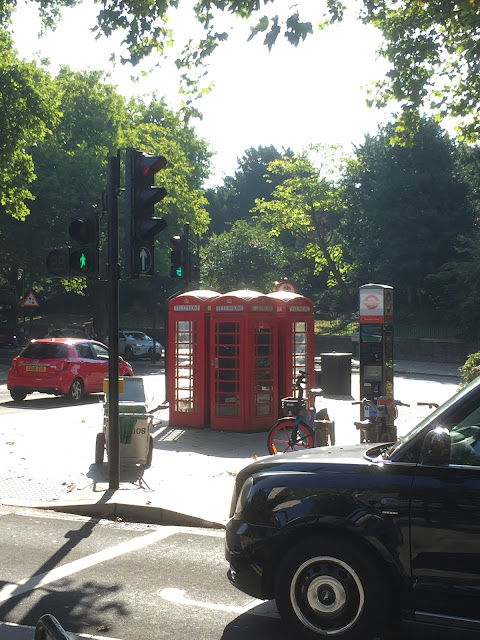











































































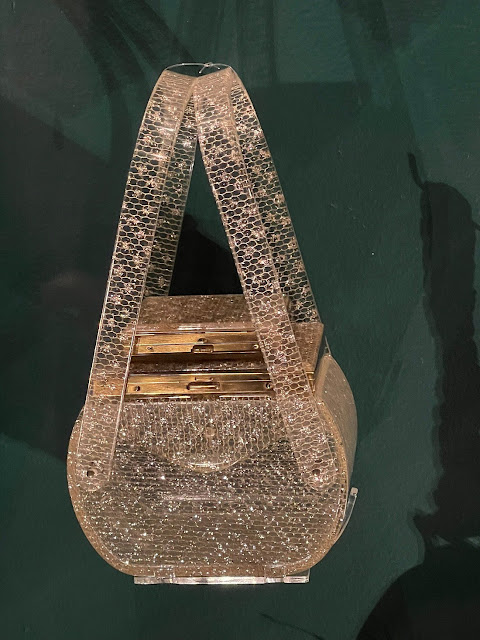






















































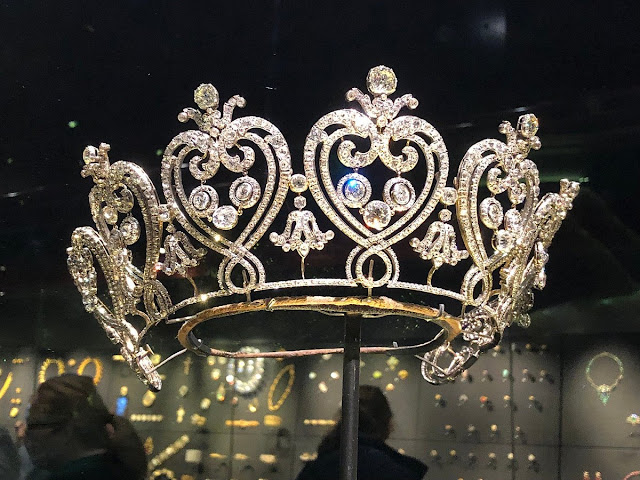











































































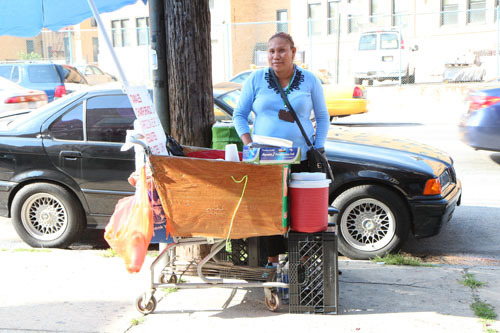


















































































































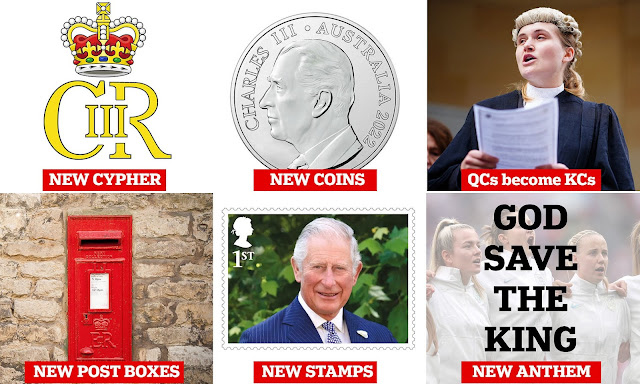
No comments:
Post a Comment
Don't be shy: leave your comments :)